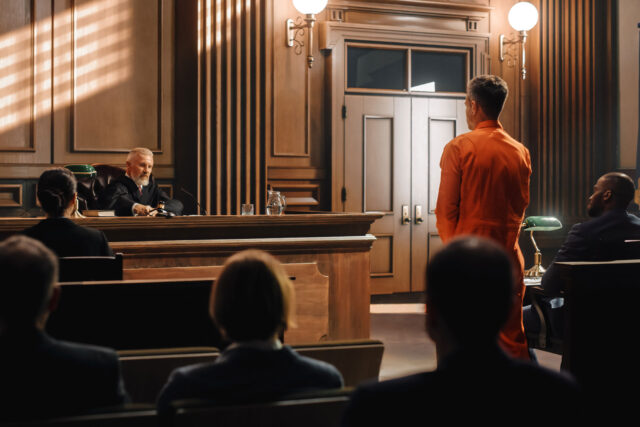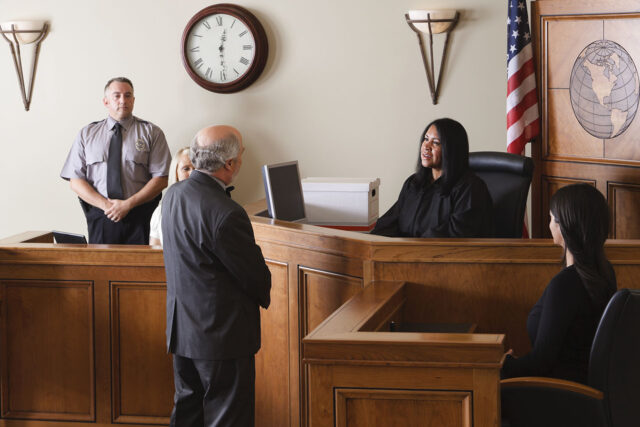-
- California’s criminal courts are part of one of the world’s largest court systems.
California’s court system consists of 58 superior or trial courts, with at least one judge per county; a Court of Appeal, divided into six geographical districts; and the state Supreme Court. The Court of Appeal reviews contested superior court decisions, while the Supreme Court has the discretion to review decisions made by the Court of Appeal—and must review any case in which the death penalty has been imposed. The court system—which handles about 7.5 million criminal, civil, family and juvenile, probate, and mental health cases per year—receives about 1% of the state General Fund; its budget for 2015–16 is $3.7 billion ($1.7 billion General Fund and $2 billion other funds). District attorneys and public defenders are provided by local governments. - Most reported crimes do not become criminal cases.
Unlike civil cases, which are initiated by individuals or organizations to resolve private disputes, in criminal cases law enforcement must have probable cause to make arrests and the county district attorney must decide whether to prosecute. In court, the prosecution is held to a high standard of proof—it must prove guilt “beyond a reasonable doubt.” In 2013, 45.6% of violent crimes (those tracked as part of the Uniform Crime Reporting Program) and 13.5% of property crimes in California were turned over for prosecution. These rates are lower than the national average (48.1% for violent crimes and 19.7% for property crimes). - The vast majority of criminal cases are traffic violations.
Roughly four out of five court filings are criminal—felonies, misdemeanors, or infractions. Unlike felony or misdemeanor charges, which may result in jail or prison sentences, infractions are punishable only by fines. Most infractions are traffic violations, which account for more than 4.6 million filings in California; non-traffic criminal matters numbered less than a million in fiscal year 2013–14.
- California’s criminal courts are part of one of the world’s largest court systems.
Most criminal cases are traffic violations

SOURCE: Judicial Council of California, Court Statistics Reports (2006–2015).
-
- Most criminal defendants are unable to afford legal counsel.
The right to legal counsel for criminal defendants is guaranteed in both the US and California Constitutions. Courts must appoint public defenders to represent indigent criminal defendants. In California, public defenders represent an estimated four out of five felony defendants. - The vast majority of felony cases are resolved before trial.
For fiscal year 2013–14, only 2% of felony cases were settled by trial. Most are resolved when the defendant enters a guilty plea or a plea of no contest. In many instances, the defendant agrees to plead guilty or no contest and in exchange the prosecutor reduces the charges or makes a favorable sentencing recommendation. The judge has the discretion to accept or reject plea agreements. - Most felony filings result in convictions.
Convictions are the norm in all cases. In 2013–14, 70% of felony cases that were resolved before trial resulted in a felony conviction, 13% resulted in a misdemeanor conviction, and 17% were dismissed, transferred, or resulted in an acquittal. Of the 2% of cases that were resolved by jury trials, 81% resulted in felony convictions, 4% resulted in misdemeanor convictions, and 14% resulted in acquittal, dismissal, or transfers.
- Most criminal defendants are unable to afford legal counsel.
Most felony filings result in convictions

SOURCE: Judicial Council of California, 2015 Court Statistics Report.
NOTE: Data for fiscal year 2013–2014. Less than 1% of cases are resolved by court trials, in which the judge alone decides the case.
- Judges operate within a complex and evolving sentencing framework.
California’s sentencing laws have undergone many changes over the past several decades. In 1977, the state adopted a “determinate” sentencing system, under which judges select from a range of three possible prison terms for most felons—a few of the most serious crimes still carry “indeterminate” terms of up to life. In 1994, voters approved the “three strikes” law, which lengthened the prison terms of felons with prior “strikes.” Voters modified the law in 2012 to apply only to serious or violent repeat offenses. In 2011, public safety realignment required judges to sentence low-level offenders to county custody rather than state prison.
Topics
Criminal Justice




